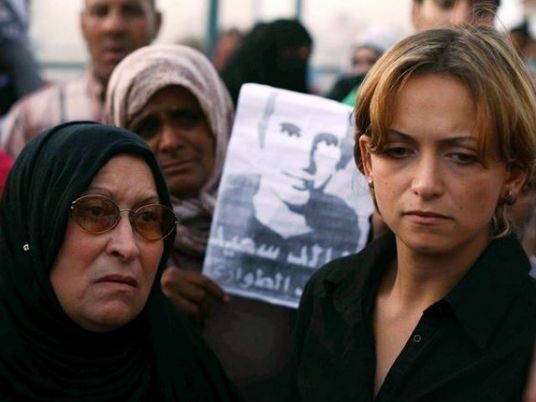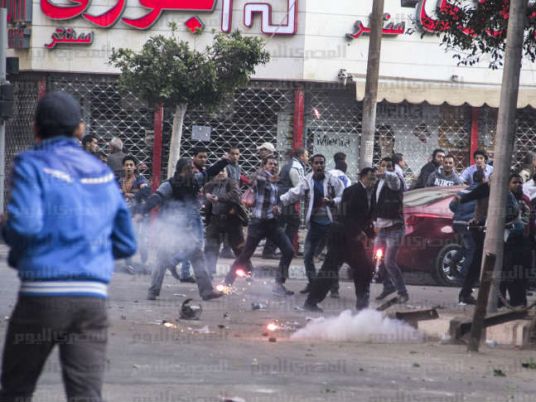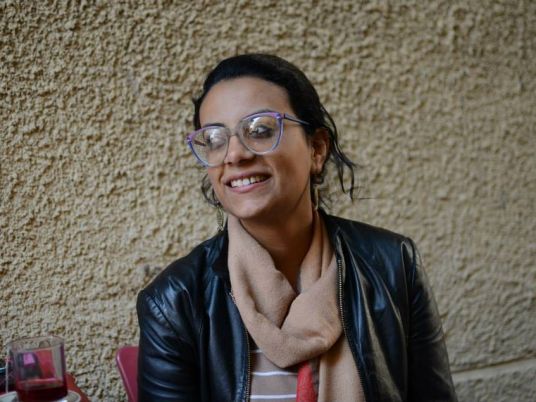Al-Masry Al-Youm has obtained a copy of records of the investigation into the killing of Alexandrian Khaled Saeed, which show surprising findings by the appeals prosecution services.
Among the findings are a telephone call received by one of the witnesses urging him not to testify to the police.
For the first time, a diagram of the crime scene has been included in the investigation records. The diagram shows the surrounding streets, the cybercafe where the Saeed was sitting, and the building in front of which he was beaten by two police officers.
The records include the testimonies of Saeed’s mother, the internet cafe owner, the guard at the nearby building, his wife, employees at the Kum el-Dekka morgue, and medical examiners.
The investigation records are made up of some 300 papers, which formed the basis for the decision to refer both police officers, Mahmoud Salah Mahmoud and Awad Ismael Suleiman, to the criminal court, where they will be tried for the use of violence and unjustified detention of the victim.
Investigations started with the testimony of Mohamed Mohamed Thabet, an assistant at the Sidi Gaber police station, who registered a report of the incident based on a call from a police patrol reporting an injured person lying on the ground in the Cleopatra neighborhood. Thabet said he also received several phone calls from several other persons, including one from the two police officers who notified him of an injured man who had lost consciousness after swallowing an unidentified packet.
Thabet said he immediately moved to the crime scene, where he discovered an unconscious man lying on the ground. He was unable to determine whether the person was injured or not, due to the large number of locals who had gathered around trying to revive him.
“I put my hand on his chest, then felt his pulse to check whether he was still alive, but he was mute and inert. The people around were trying to make him drink salty water in order for him to throw up the object he had swallowed, but in vain. The ambulance arrived shortly after a phone call from the locals,” said Thabet.
“People helped carry him on a trolley to the ambulance, but he fell off, and the paramedics told the people off for letting him fall. In the end, the ambulance left with the young man. I asked the police and citizens at the crime scene about the details of what had happened. They said they had watched Saeed and his friend, Mohamed Radwan Abdel Hamid, also nicknamed “Mohamed Hashisha,” attempting to escape as the police officers came to apprehend them, and when the officers managed to catch them, Khaled swallowed a packet he had been holding in his hand before the officers could grab it from him–although Hashisha told him not to do so. According to the witnesses, this caused him to lose consciousness,” Thabet continued.
The chief of the appeals prosecution services, Mohamed Omar, also listened to the account of Haytham Hassan Hanafi, 25, the internet cafe owner who witnessed the killing and claimed to have information about the incident.
Hanafi delivered his story: “On 6 June, at 11:30 PM, I was at my cybercafe. The rest of the people there included my dad and many other clients. I was standing by the shop’s entrance when I saw Saeed approaching, followed by his friend. He saluted us before he entered the cybercafe. Thirty seconds later, I was surprised when two men in plain clothes ran into the shop and one of them grabbed Saeed by the shoulder.
“‘Who are you?’ Saeed asked them. ‘We are police investigators, you *****,’ they answered. Trying to resist them, Saeed was pushed by one officer, hitting his head on marble, but was not injured. My dad and I told the police officers off and pushed them out. They then took Saeed to the entrance of a nearby building and hit his head against the iron gate, also punching him in his face and belly. He received a hit in the leg, after which he fell down and hit his head on one of the steps. One of the officers went down on Saeed, trying to choke him, and Saeed cried ‘I am dying here,’ but his attacker replied ‘I won’t leave you until you are dead.’ The other one kept kicking Saeed with his feet. They went on beating him until he started bleeding from his head and mouth. When Saeed stopped moving, officer Mahmoud called the police, giving them their location. There was a doctor at the cybercafe whose name and address I cannot fully recall, I only know him as ‘Hakim.’ That doctor examined Saeed and told us he was dead. We were told the same by the ambulance medic who refused to take the corpse, but when the officer ordered him to carry the body away, he did. Hashisha was taken into the police vehicle and everyone left eventually.”
Before finishing his testimony, Hanafi said he had extra information that he needed to deliver, and the prosecutors agreed. He mentioned a phone call he received at his cafe, in which the caller told him: “Tell Hanafi not to leave his house,” and then hung up. “Later, I received another call from a state security officer who inquired whether I had received any threats, to which I replied in the negative, due to the horror I felt, but the officer told me not to panic.”
Saeed’s mother testified twice. In her first account she said, “I knew about my son’s death from the people who told me that two police officers beat him to death,” noting that her son used to smoke hashish every now and then, but smoked ordinary cigarettes most of the time. “I do not know, people told me,” was her response to most of the prosecution’s queries.
Further interviews included Mohamed Naim Faris, 35, the building’s doorman, who said: “I heard there was a fight in the street, and when I went out, I saw the two officers dragging Saeed to the building’s doorway, and Saeed clinging to the iron gate. ‘Spit out what’s in your mouth,’ the officers told Saeed, then beat him until he bled from the mouth and nose. Later, the police car came and took Saeed, but returned him back within ten minutes to the building’s doorway, but he was then bleeding and motionless.” Faris then repeated the events narrated by the cafe owner.
Salem Hassan Ahmed, 18, a student, said he was at the building at that time and saw the two officers attacking Saeed with kicks and punches after dragging him to the doorway. He added the officers then took Saeed to the police car, but returned him back bleeding.
When Saeed’s mother returned to give a testimony for the second time, she stressed that she saw her son’s corpse at the morgue six hours after he had been killed. “He was on the trolley, wearing white shorts and a black T-shirt, barefooted, injured in the face and the back of his head, bleeding from his knees, hands, and feet, and he had broken teeth,” she said. ًWhen asked about the photos taken of the body, she said that Saeed’s brother took them on his mobile phone while he was at the morgue at 3:00 AM. She added that she has not since seen her son, and called for a new autopsy, describing the medical examiners’ report as “incorrect.”
The prosecution also interrogated Afify Abdel Aal Afify, 41, an employee at the morgue, who said he found a bruise under Saeed’s left eye and scratches on his lips, but no other injuries. ًWhen he was confronted with the photos of the corpse with several injuries, Afify said the body in the photos looked entirely different to how it appeared when it first arrived at the morgue. He added that Saeed’s mother and brother came to the postmortem room and saw the corpse, but he did not register their arrival since he had no visitors’ log. He refuted the claim that Saeed’s brother took mobile shots of the victim before autopsy, explaining that he himself was present when the Saeed family were checking the body.
The prosecution also listened to Saeed’s brother, Ahmed, an Egyptian with American nationality, who said: “I left my brother minutes before the incident, and then received phone calls from neighbors telling me he had been killed. I hurried to the crime scene, only to discover that my brother had been taken to the morgue, where policemen refused to let me in and took me to the police station instead. There, four officers told me that Khaled had swallowed something that choked him, and they brought three witnesses, who I did not recognize, to support their story. But on going back to the location of the murder, people told me about the beating my brother was subjected to.”
Translated from the Arabic Edition.




